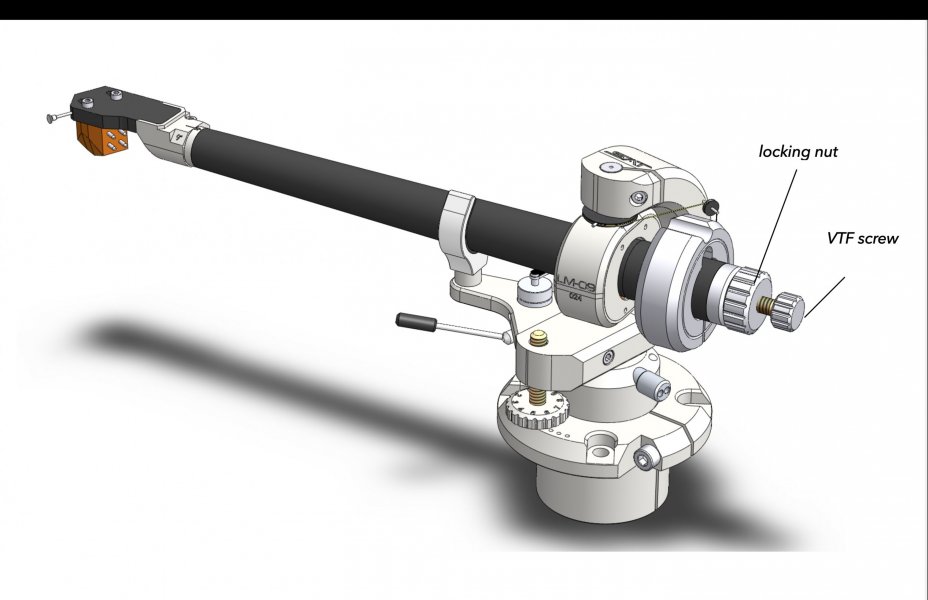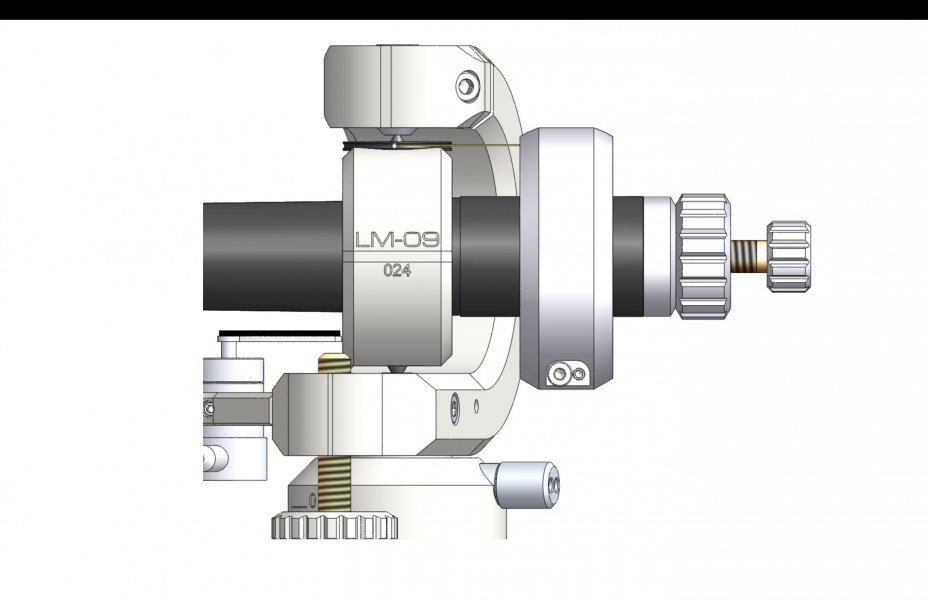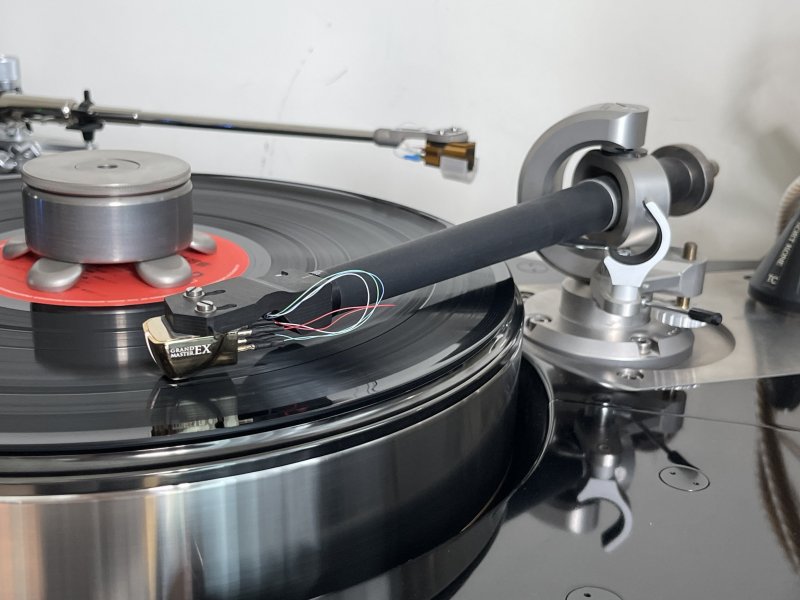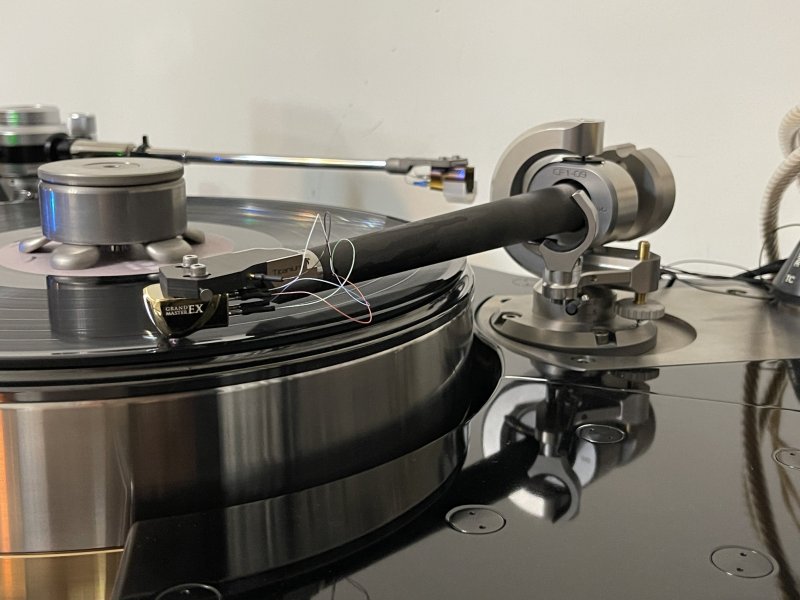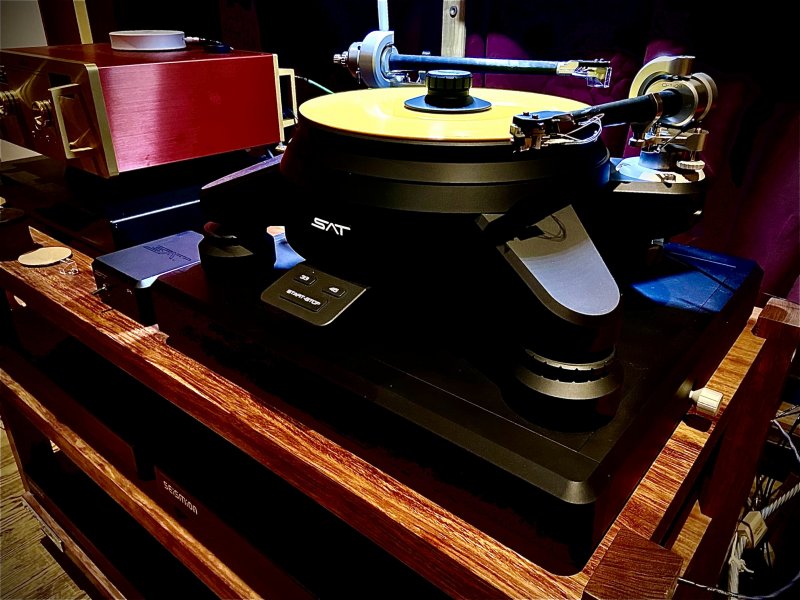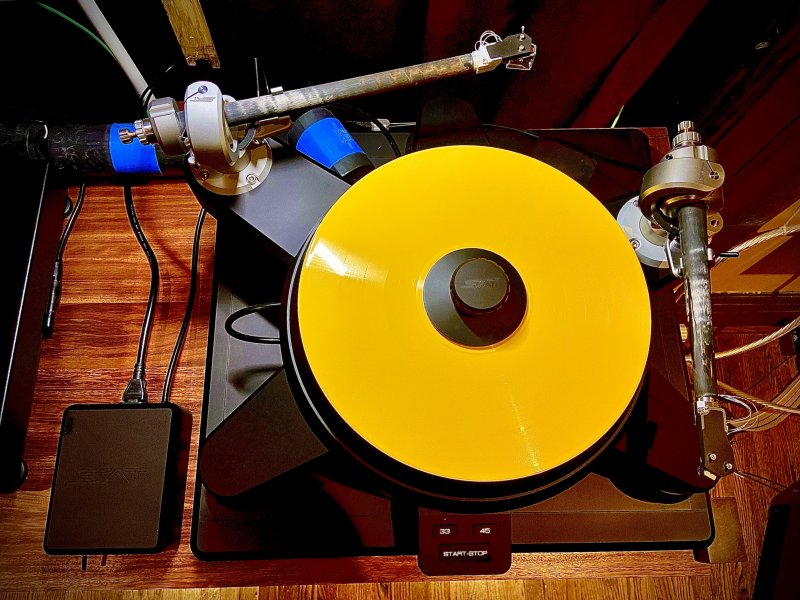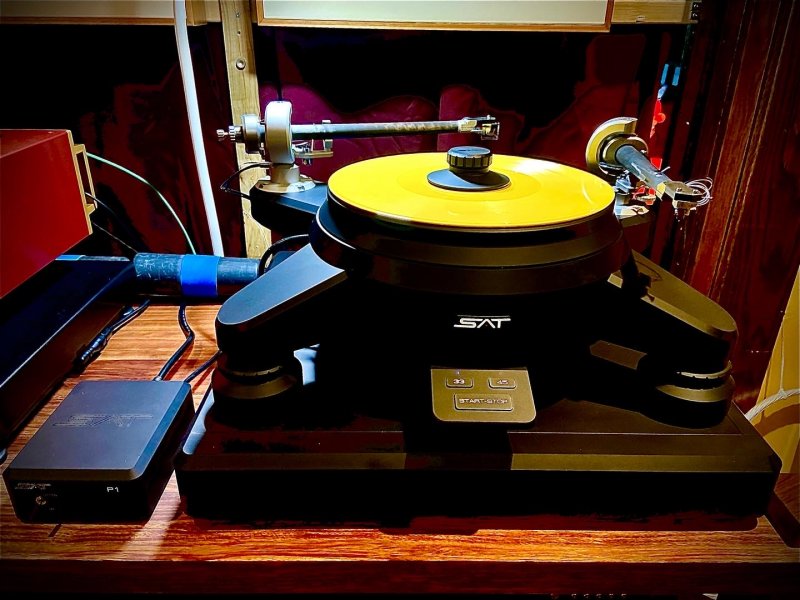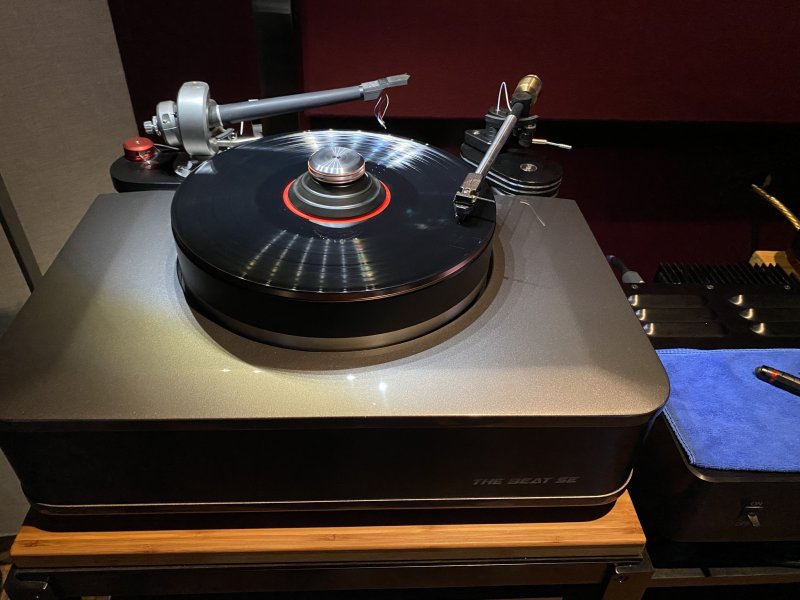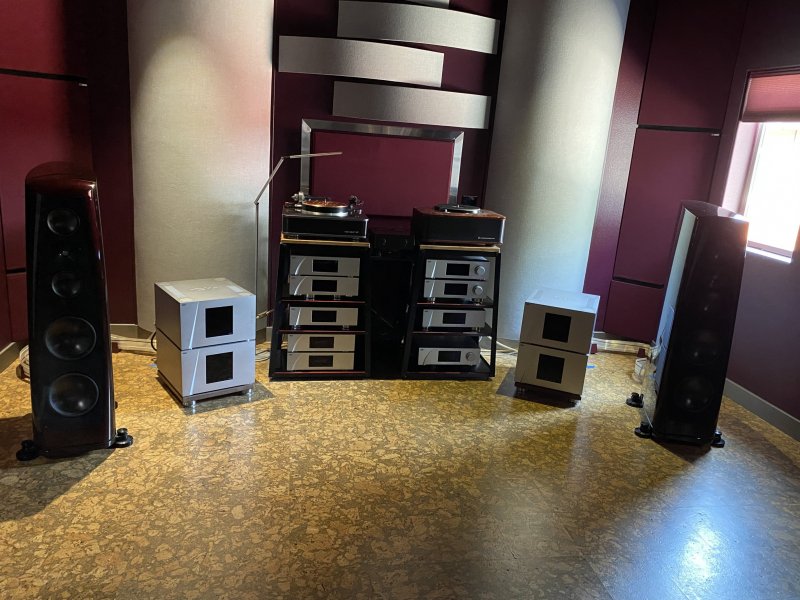SAT CF1 series tonearms which consists of 9 and 12 inches was launched in 2018. It was an improved version of the original SAT introduced in 2016.
In 2019, SAT designer, Marc Gomez, launched his turntable XD1, it came with an upgraded CF1 tonearm named CF1 Ti. Initially CF1 Ti could only be purchased with the turntable and was not available separately. There was very little information about the difference between the standard version and the Ti (titanium) version. The only thing we know is there is a titanium tube inside the carbon fibre wand.
Now we can buy CF1 Ti separately. Although it is 50% more expensive than the standard version, I was told that there were quite a few buyers. Last week I had the opportunity to do a direct shootout between CF1 9inches and CF1 Ti 9inches. Both tonearms have Lyra Altas Lambda SL mounted, and the shootout was done on TechDAS Air Force One Premium turntable. Swapping the two tonearms were quick and easy due to the design of SAT armboard. The arm is secured with one screw. The difference between two arms was well demonstrated.
Before testing, I expected the titanium version would sound brighter as it is the sonic characteristic of the metal. On the contrary, CF1 Ti is a lot warmer and smoother than CF1. The resolution is even higher than CF1. CF1 already has one of the highest resolution in all the tonearms I have heard. There is some dark magic that Marc Gomez has done on CF1 Ti to make it sounds so different. The external appearances of both arms are identical. But weight distribution of the wand is not the same. We know that because the position of counterweight is not the same when tracking forces are the same. The photo shows the difference in counterweight.
My verdict is CF1 Ti is a better tonearm than CF1 by some margin.
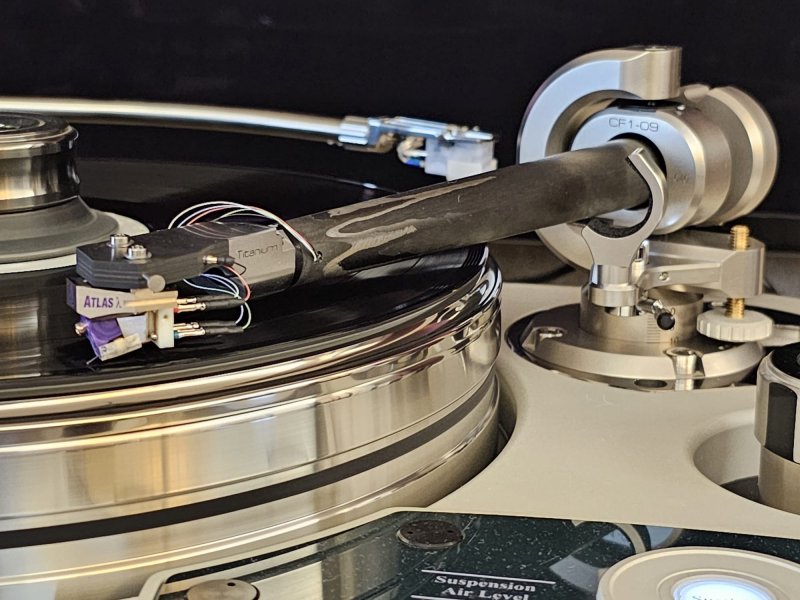
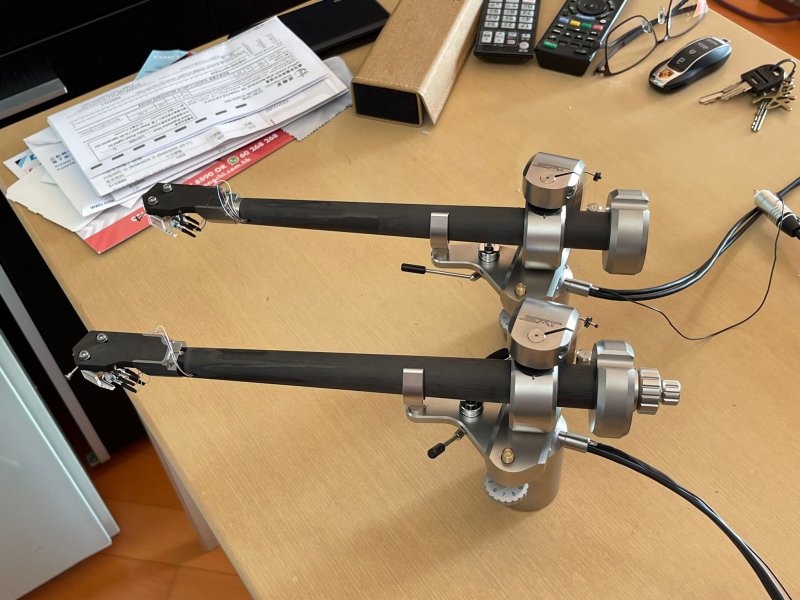
In 2019, SAT designer, Marc Gomez, launched his turntable XD1, it came with an upgraded CF1 tonearm named CF1 Ti. Initially CF1 Ti could only be purchased with the turntable and was not available separately. There was very little information about the difference between the standard version and the Ti (titanium) version. The only thing we know is there is a titanium tube inside the carbon fibre wand.
Now we can buy CF1 Ti separately. Although it is 50% more expensive than the standard version, I was told that there were quite a few buyers. Last week I had the opportunity to do a direct shootout between CF1 9inches and CF1 Ti 9inches. Both tonearms have Lyra Altas Lambda SL mounted, and the shootout was done on TechDAS Air Force One Premium turntable. Swapping the two tonearms were quick and easy due to the design of SAT armboard. The arm is secured with one screw. The difference between two arms was well demonstrated.
Before testing, I expected the titanium version would sound brighter as it is the sonic characteristic of the metal. On the contrary, CF1 Ti is a lot warmer and smoother than CF1. The resolution is even higher than CF1. CF1 already has one of the highest resolution in all the tonearms I have heard. There is some dark magic that Marc Gomez has done on CF1 Ti to make it sounds so different. The external appearances of both arms are identical. But weight distribution of the wand is not the same. We know that because the position of counterweight is not the same when tracking forces are the same. The photo shows the difference in counterweight.
My verdict is CF1 Ti is a better tonearm than CF1 by some margin.







